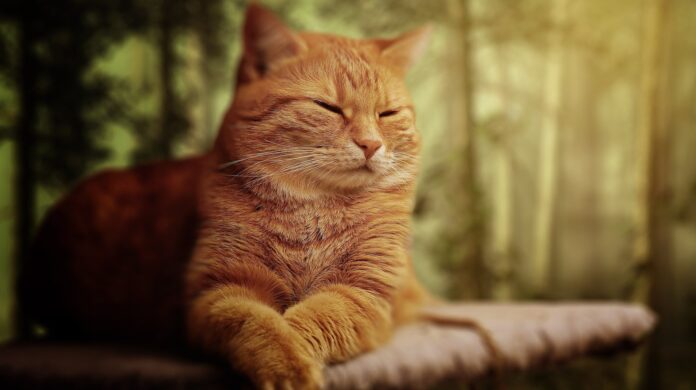What Does It Mean When a Cat Sits Facing Away From You
One possible explanation for a cat sitting with its back turned to you is that they feel safe and secure in their environment. Cats are naturally cautious animals, and by positioning themselves with their back facing outwards, they can keep an eye on their surroundings while still feeling protected. It’s almost like they’re saying, “I trust my surroundings enough to let my guard down.”
Another reason could be that your cat is simply seeking some alone time or personal space. Cats are independent creatures and sometimes need solitude to recharge or relax. By turning away from you, they may be indicating that they prefer not to engage in any social interaction at the moment.
Signs of Discomfort or Fear in Cats
- Previous Traumatic Experience: Cats that have experienced trauma or abuse in the past may exhibit fearful behavior as a result of their past experiences. This could include sitting facing away from you as a way to distance themselves and feel more secure.
- Lack of Socialization: Cats that haven’t been properly socialized during their early stages of development may display fear towards unfamiliar people or situations. Sitting with their back turned can be a defensive posture to create distance and protect themselves.
- Environmental Stressors: Changes in the environment such as moving to a new home, introduction of new pets, loud noises, or disruptions in routine can cause stress and anxiety in cats. In response, they may choose to face away from you as a means of seeking comfort and security.

Physical Signs of Discomfort in Cats
Apart from the body position, there are also physical signs that indicate when cats are uncomfortable or fearful. Pay attention to these cues:
- Ears: When cats are anxious or scared, they often flatten their ears against their head as if trying to make themselves appear smaller.
- Tail Position: A tucked tail is another sign that your cat is feeling uneasy or threatened.
- Body Posture: Crouching low to the ground with tense muscles suggests fearfulness in cats.
- Piloerection: Piloerection refers to the phenomenon where a cat’s fur stands up on end when they’re frightened or agitated.
How to Recognize Signs of Fear in Feline Body Language
Understanding feline body language can help you recognize signs of fear in your cat. Here are some key indicators to look out for:
- Dilated Pupils: Cats’ pupils dilate when they are scared or anxious, so keep an eye on their eyes.
- Avoidance and Hiding: If your cat prefers to hide or avoids interactions with you while facing away, it could be a sign of fear.
- Excessive Grooming: Some cats may resort to excessive grooming as a self-soothing mechanism when feeling fearful.
- Aggression or Defensive Behavior: Fearful cats may display defensive behaviors such as hissing, growling, swatting, or biting when they feel threatened.
Establishing Trust and Building a Bond with Your Cat
When it comes to our feline friends, understanding their behaviors is crucial in building a strong bond with them. One behavior that may leave cat owners perplexed is when their cat sits facing away from them. So, what does it mean when a cat exhibits this behavior? Let’s explore some possible reasons and how we can establish trust and strengthen our relationship with our furry companions.
- Need for Personal Space: Cats are known for their independent nature and occasional need for personal space. When a cat sits facing away from you, it could simply be seeking some alone time or respite from social interaction. Respect their boundaries and give them the space they need. Avoid forcing attention or invading their personal territory during these moments.
- Observing Their Environment: Cats are natural observers, always on the lookout for potential threats or interesting stimuli in their surroundings. When your cat sits facing away from you, they might be keeping an eye on something captivating outside the window or monitoring movements in the room discreetly. Allow your cat to engage with its environment without interruption, as this helps them feel secure and in control.
- Trust-building Exercises: To establish trust and foster a deeper connection with your cat, try incorporating these exercises into your daily routine:
- Playtime: Engage in interactive play sessions using toys that stimulate your cat’s hunting instincts.
- Positive Reinforcement: Reward desired behaviors with treats or gentle praise to reinforce trust between you and your feline companion.
- Gentle Touch: Gradually introduce gentle petting while respecting your cat’s comfort level. Pay attention to their body language for signs of enjoyment or stress.
Remember that building trust takes time, patience, and consistency. Each cat is unique, so it’s essential to understand their individual preferences and adapt accordingly.


